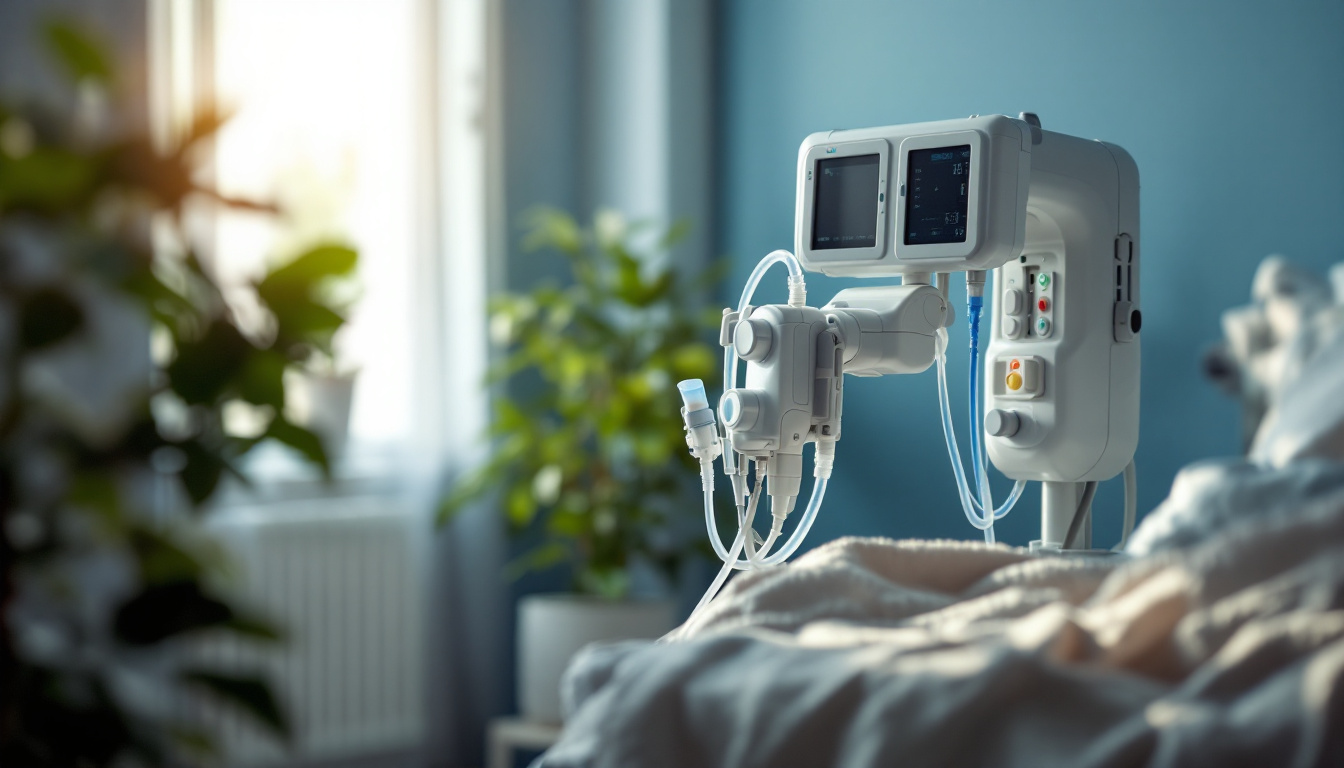Tips for Ensuring a Smooth Transition from Hospital to Home Care
Strategies for a Successful Hospital to Home Transition

Introduction
Transitioning from hospital to home can be challenging for patients and caregivers alike, requiring careful planning and coordination. This article explores key strategies for ensuring a smooth and successful transition, focusing on critical areas like medication management, creating safe home environments, and maintaining communication with healthcare providers. By understanding these elements, patients and families can reduce the risk of readmission and promote optimal recovery.
Preparing the Home Environment

How do you prepare for someone coming home from the hospital?
Preparing for a loved one’s return from the hospital involves creating an environment conducive to recovery. Here’s how to ensure a smooth transition:
Creating a safe space for recovery:
- Remove hazards: Clear away tripping hazards like loose rugs or clutter that can cause falls.
- Modify the environment: Install grab bars in bathrooms and ensure well-lit pathways.
- Organize living areas: Designate a recovery space that’s quiet and comfortable, ideally near necessities like bathrooms and kitchens.
Organizing medical equipment:
- Set up equipment: Ensure that any required medical devices (like walkers or oxygen supplies) are assembled and accessible.
- Keep medications in a central location: Have all prescribed medications organized and visible, along with an updated list of instructions and dosages.
- Establish a medication routine: Consider using a medication tracker or pill organizer to help manage schedules post-discharge.
Reviewing discharge papers:
- Understand care instructions: Go through the discharge paperwork with your loved one, emphasizing medication schedules and dietary restrictions.
- Schedule follow-up appointments: Mark important follow-up visits on a calendar and confirm transportation options as needed.
- Be aware of 'red flags': Educate yourself and your loved one on signs that indicate complications, enabling quick action should concerns arise.
By preparing your home thoughtfully and involving the patient in care discussions, you can significantly enhance their recovery experience.
Understanding Key Elements of Care Transitions

What are the four pillars of care transition?
The successful transition from hospital to home or skilled nursing facilities relies on the four essential pillars of care transition, which include:
- Medication Management: Gaining competence in managing medications can significantly impact recovery, as mismanagement can lead to health complications.
- Personal Health Record: Keeping an updated, easily accessible personal health record helps patients and caregivers monitor health and treatment progress.
- Timely Follow-Up Care: Scheduling timely appointments with primary and specialty care providers is crucial to address any ongoing health issues or concerns.
- Effective Care Plan: A detailed care plan incorporates medical treatments, medication schedules, and lifestyle adjustments tailored to the patient’s needs.
How does the Care Transitions Model support better outcomes?
The Care Transitions Model emphasizes the significant role of a Transition Coach, who provides personalized support and guidance throughout the discharge process. This figure helps patients and their families navigate complex healthcare systems, fostering a deeper understanding of their treatment plans and necessary follow-up.
Why is clear communication among healthcare providers essential?
Effective communication among healthcare providers is vital to ensure all aspects of a patient’s care are coordinated. By engaging patients in their care, healthcare teams can significantly reduce hospital readmissions and improve overall health outcomes. Addressing barriers and emphasizing social drivers of health helps create an environment conducive to successful transitions.
| Element of Care | Description | Importance |
|---|---|---|
| Medication Management | Understanding and managing medications post-discharge | Reduces the risk of medication errors and complications |
| Personal Health Record | Keeping track of health info and treatments | Enhances patient engagement and responsibility |
| Timely Follow-Up Care | Ensuring appointments are scheduled promptly | Addresses health issues before they escalate |
| Effective Care Plan | Developing a personalized care strategy | Facilitates recovery and continuity of care |
This structured approach to care transitions not only aids older adults but emphasizes the need for collaboration among patients, caregivers, and healthcare teams.
Common Challenges in Care Transitions

What are some issues that can cause ineffective transitions in care?
Ineffective transitions in care can stem from various critical challenges. One of the most significant issues is poor communication among healthcare providers, as well as the communication gap between providers and patients. This lack of clarity can lead to misunderstandings regarding medication, dietary restrictions, and follow-up care.
Another pressing concern is inadequate education for both patients and caregivers. When patients leave the hospital without fully understanding their health conditions and treatment plans, they are more likely to encounter difficulties at home. Reports indicate that nearly 50% of patients experience medication errors post-discharge, underscoring the need for comprehensive instruction on handling medications.
Timely follow-up appointments are also crucial. Failing to schedule these can increase the risk of complications, particularly for those with chronic conditions like neurologic illnesses. Their complex care often requires the engagement of multidisciplinary teams, including behavioral therapists and social workers, to address both mental health and social needs effectively.
In summary, addressing these challenges through improved communication, education, and timely follow-up can significantly enhance the transition process, ultimately leading to better patient outcomes.
Engaging Family and Support Networks

Role of Family Caregivers
Family caregivers play a vital role in the recovery process after a hospital discharge. They assist with daily tasks such as cooking, cleaning, and personal care. Having someone familiar at home can significantly ease the transition, allowing the patient to focus on their recovery without added stress.
Family involvement should begin early in the discharge planning process. By communicating clearly about duties and expectations, caregivers can feel more prepared. Training in managing medical equipment and administering medications ensures that family members can adequately support the patient, enhancing the quality of care.
Emotional Support Networks
Coping with the changes that come after hospitalization can be emotionally taxing. Establishing a strong support network helps patients deal with the stress and uncertainty often faced post-discharge. This can include family members, friends, and even professional support such as counseling services or local support groups.
Emotional support aids in coping with health-related adjustments and can mitigate feelings of isolation. This network allows patients to share their experiences and helps in better adapting to lifestyle changes.
Preventing Caregiver Burnout
While family caregivers provide essential support, they must also be cautious of burnout. The demands of caregiving, coupled with their personal responsibilities, can lead to physical and emotional exhaustion. It's crucial for caregivers to seek resources, such as respite care or home health services, to share the caregiving load.
Regular check-ins with healthcare providers and leveraging community resources can foster better self-care practices. Recognizing the signs of caregiver burnout is essential in maintaining a healthy balance and ensuring both the caregiver and patient have their needs met.
Importance of Medication and Follow-Up Management

Medication Self-Management
Managing medications effectively is critical after a hospital discharge. Patients should ensure they fully understand their prescribed medications, dosages, and schedules before leaving the hospital. Writing down medication instructions can significantly reduce the risk of errors—almost 40% of patients over 65 years old face medication mismanagement after discharge. To avoid complications, patients should clarify who to contact for questions related to medications, ensuring timely access to support.
Scheduling Follow-Up Appointments
Equally important is the organization of follow-up healthcare appointments. Coordination of these visits—whether for physical therapy or specialist consults—is essential for continuing recovery. Families should maintain a calendar for appointments, making it easier to track and ensure adherence to post-discharge care plans.
Tracking Side Effects and Complications
Monitoring for side effects or any new health changes post-discharge cannot be overstated. Patients and caregivers should be aware of common signs that could indicate complications, promoting quicker responses to potential issues. Engaging with healthcare providers for regular check-ins allows for proactive adjustments in care plans, ultimately enhancing the patient’s recovery experience and wellbeing.
Utilizing Home Care Resources
Home Health Agencies
Home health agencies are vital partners in the transition from hospital to home. These organizations provide skilled nursing, therapy, and personal care services to support recovery. It’s essential to select a home health agency that aligns with individual health needs. Consider asking for recommendations from healthcare providers to find reputable agencies that specialize in post-hospitalization care.
Online Support Groups
In addition to professional services, online support groups offer emotional and informational resources for both patients and caregivers. They allow individuals to connect with others experiencing similar challenges, share experiences, and obtain advice on managing health issues. These virtual forums can also provide valuable tips for navigating the transition and adjusting to new roles in caregiving.
Caregiver Training and Education
Training and education for family caregivers play a crucial role in ensuring proper care at home. Many organizations offer programs that educate caregivers on medication management, meal preparation, and basic medical care tasks. Having well-informed caregivers can decrease caregiver burnout and enhance the overall quality of care.
| Topic | Description | Benefits |
|---|---|---|
| Home Health Agencies | Professional support services post-discharge | Medical assistance and therapy for recovery |
| Online Support Groups | Community for shared experiences | Emotional support and resource sharing |
| Caregiver Training | Educational programs for family caregivers | Improved care quality and decreased burnout |
Utilizing these resources can significantly ease the transition process, making it smoother and more manageable.
The Role of Transitional Care Programs
BOOST, CTI, and TCM Models
Transitional care programs, such as BOOST (Better Outcomes for Older Adults through Safe Transitions), Care Transitions Intervention (CTI), and the Transitional Care Model (TCM), play a pivotal role in enhancing the hospital-to-home transition. These models focus on various aspects of patient care, ensuring that the necessary support is available immediately after discharge.
Reducing Hospital Readmission Rates
Evidence suggests that effectively organized transitional care can significantly reduce hospital readmission rates. When patients transition smoothly from hospital to home, they are less likely to experience complications that require further hospitalization. This is particularly crucial for older adults, who are at a higher risk of readmission due to various health challenges.
Coordinating Discharge Planning
Coordinating discharge planning is vital for successful transitions. Programs ensure that patients receive personalized care plans, which include follow-up appointments and medication management. This proactive approach addresses potential issues before they escalate, allowing patients and their families to feel more prepared and supported.
| Element of Care | Importance | Impact on Outcomes |
|---|---|---|
| BOOST | Enhances patient education and safety | Reduces readmission rates |
| Care Transitions Intervention | Facilitates better communication between providers | Improves continuity of care |
| Transitional Care Model | Provides structured follow-up care | Decreases complications post-discharge |
Overall, investing in these transitional care programs significantly bolsters the recovery process for patients transitioning from hospital to home.
Conclusion
Ensuring a smooth transition from hospital to home requires careful planning and active involvement from both healthcare providers and families. By addressing critical areas such as medication management, home preparation, and utilizing support services, patients can experience an improved recovery process and reduce the risk of complications or readmissions. Through collaboration and informed care strategies, the move from hospital to home can be both safe and effective.
References
- Transitioning Care From Hospital to Home: Ways You Can Help
- Care Transitions - Making Healthcare Safer III - NCBI
- Hospital to Home Transitions: 8 Steps for Patient Success
- Tips to Ensure a Smooth Transition Home From the Hospital - CareFor
- Supporting the Transition From Hospital to Home for Older Adults
- A Guide to Transitioning from Hospital to In-Home Care - Advance ...
- Transition From Hospital To Home: A Guide For Safe Recovery
- Hospital to Home Care Transition Guide - TLC Nurse Solutions
- Blog Search :: Belvedere Health Services
- [PDF] Care Transitions Model - The John A. Hartford Foundation



































































































